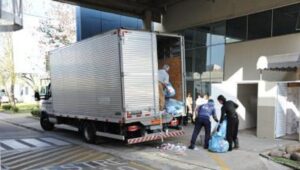The Forest Replacement and Compensation Program aims to compensate for the cutting of vegetation in the construction and implementation of distribution lines and energy substations.
The suppression of vegetation, especially native trees and forest fragments, depends on prior authorization from the competent environmental agency and compliance with environmental conditions or compensation, provided for in the legislation and/or defined in the licenses/authorizations issued.
Among the compensation directly linked to the suppression of native vegetation are Forest Compensation for suppression of forest vegetation in the medium or advanced stage of succession and Mandatory Forest Replacement for cutting down trees.
The Atlantic Forest Compensation is carried out in accordance with Law No. 11,428/2006 (Atlantic Forest Law) and SEMA Resolution No. 3/2019. For compensation, an area equivalent to the extension of the deforested area is allocated, with the same ecological characteristics, in the same Biome, preferably in the same hydrographic basin and whenever possible in the same hydrographic microbasin. For environmental compensation, priority should be given to restoring degraded areas through the presentation of a Forest Recovery Project.
Forest replacement must be complied with by every consumer who explores, uses, transforms or consumes forest raw materials, according to MMA Normative Instruction No. 2006.
In the State of Paraná, mandatory forest replacement is regulated by Decree No. 1940/1996.
The implementation of mandatory forest replacement can be accomplished by the following alternatives:
- Supply of seedlings to municipal governments or municipal bodies;
- Planting of forest seedlings in forest restoration;
- Payment of the “tree quota” forest replacement fee.








